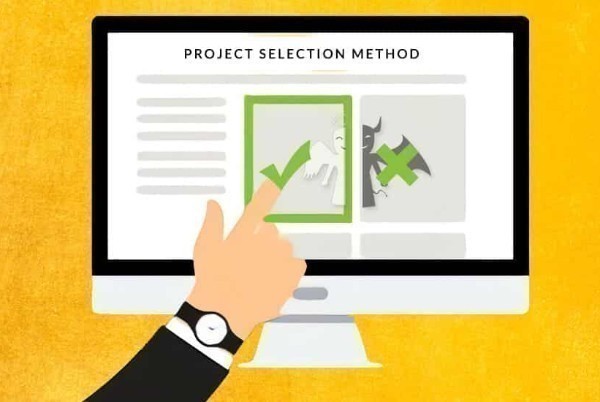Blogs
Project Selection Method
Project Selection Method

Which Project Life Cycle to use when?
Project Life Cycle
The project life cycle comprises the set of phases into which a project is organized. Depending on the organization context and any overlapping between phases, various types of project life cycle can be defined and be used to manage different types of projects, different environments they operate in, and with different Organizational structures, different management styles, different sizes, different customer needs and requirements and different Products ,Services or Results they deliver.
1. Predictive or Planning-focused Life Cycle
It is a type of project life
cycle in which the project Scope, Time, and Cost are determined in the initial
phases of the life cycle. It is also known as Classic, Traditional or waterfall
Life Cycles. Here projects are normally organized into a series
of sequential or consecutive phases and each phase focus on one type of
work. In this approach requirements are defined up-front before development
begins. Plans are delivered for eventual deliverables, final Product, Service
or Result is delivered only at end of project timeline. It is a plan-driven
life cycle, where we plan work upfront and from there work is focused on
following the plan. Here expected changes are minimal because work is quite
predictive and known any project scope change must be managed explicitly and
usually leads to a review of the plan and formal acceptance of the new plan.
Key stakeholders are involved at specific milestones only.
Predictive life cycles are chosen when the
product to be delivered is well-defined and relatively extensive knowledge
exists on how to build the product. This has traditionally been the most common
work model but does not necessarily suit the circumstances of all projects and
organizations.
2. Iterative Life Cycle
A project life cycle where the
project scope is generally determined early in the project life cycle, but time
and cost estimates are routinely modified as the project team’s understanding of
the product increases. Iterations develop the product through a series of repeated
cycles that successively add
functionality to the product. This type of life cycle enables the project team
to incorporate frequent feedbacks and gradually increase the experience of the
team during the project as feedback helps the team to learn about the
customer’s and other stakeholder’s expectations. This life cycle understands
that requirements are abstract and real feedback can be achieved only when
customer and other stakeholders can see some deliverable or part of the
product. Here prototypes and proofs are also planned, but the outputs are
intended to modify the plans created in the beginning.
Iterative life cycles are chosen
when it is necessary to manage vague objectives or considerable
complexity, or when the partial delivery of the product is key to
success.
3. Incremental Life Cycle
An adaptive project life cycle
in which the deliverable is produced through a series of iterations that
successively add functionality within a predetermined time span. The
deliverable contains the necessary & sufficient capability to be considered
complete only after the final iteration. In the incremental life cycle, the
whole requirement, for instance, is divided into various builds which are then
divided into smaller yet easily managed modules that should pass through the
requirements design, implementation, and testing phases. Plans
to deliver successive subsets of the overall project.
Incremental life cycles are
chosen when it is necessary to manage vague objectives or considerable
complexity, or when the partial delivery of the product is key to success.
4. Adaptive Life Cycle-Incremental and Iterative
This life cycle is a mix of
Iterative and Incremental development. An Adaptive life cycle is a change
driven. It is an agile way of doing things as it is intended to the high level
of changes. Functionalities are added incrementally, but they can be changed
based on received feedback. It needs on-going stakeholder’s involvement. Iterations are very
rapid usually with duration of 2 to 4 weeks and are fixed in time and cost. In this life
cycle the overall scope of the project is usually broken down into a
set of requirements or projects to be undertaken. At the start of an iteration,
the team defines the functionalities to be tackled in that cycle. At the end of
each iteration, the product should be ready for review by the customer and
other key stakeholders. This type of life cycle requires teams to be highly
involved and the sponsor or client to provide constant feedback.
This life cycle is used for
projects where rapid changes are expected and scope is not possible to define
upfront or when the value contribution is highly variable and with highly
involved teams. So, change during the project is naturally handled in rapid iterations.
5. Hybrid Life Cycle
A combination of Predictive, Iterative, Incremental, and/or Agile approaches is a hybrid approach.
Recent Blogs
Check out our others blogs
Extra $ Discount
Enroll Now to avail 20% Off on Prince2 Foundation & Practitioner Course
Copy Coupon Code: PRINCE20
